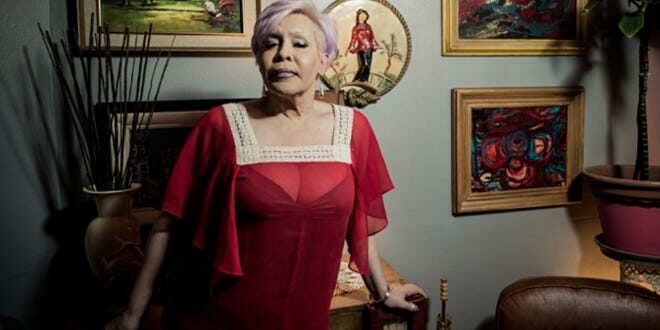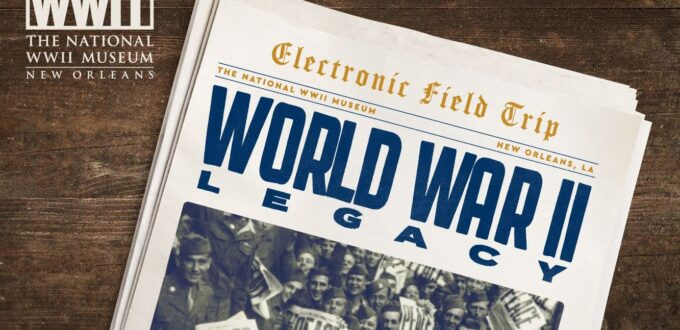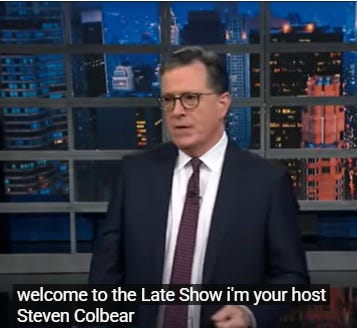Consent is Sexy is What I Learned
Bombing Hitler’s Hometown
World War II: Legacy Electronic Field Trip Part 1 Now Available
The National World War II Museum, one of the incredible organizations Adept is proud to work with, has just released Part 1 of their World War II: Legacy Electronic Field Trip—now available on-demand. At Adept, we’re honored to support the Museum’s mission by helping capture voices and transcribe vital Oral Histories—ensuring that the stories of bravery, sacrifice, and resilience are preserved for generations to come. Don’t miss this powerful journey through the past, and stay tuned for Part 2, premiering May 8.
Part 1 of The National WWII Museum’s World War II: Legacy Electronic Field Trip is now available. Explore the final months of World War II and how major battles and key decisions brought about the surrenders of Germany and Japan. Learn about the devastating loss and destruction as well as the liberation and jubilation that came with the conclusion of the war. Student reporters and their teachers will journey to sites where history happened and explore the galleries of The National WWII Museum. Part 1 is available for you to access and view at your convenience—today, tomorrow, and into the future.
Part 2 will premiere May 8 at 9:00 a.m. CT and will examine the emerging tensions between communism and democracy, the United States and USSR, and explore the standoffs that would mark the beginning of the Cold War.
Each part has a runtime of about 30 minutes.
Designed for grades 7–12.
Clawing back in the age of DOGE
A post by Grammarphobia. Read this and other posts at www.grammarphobia.com.
Ever wondered where the phrase “claw back” comes from? Our friends at Grammarphobia have traced its surprisingly long history in “Clawing back in the age of DOGE.” While the term has recently clawed its way into the spotlight thanks to a certain tech billionaire with a flair for memes and market chaos (no names, just rockets), its roots run much deeper. Check out their deep dive into the evolution of this financial phrasal—and maybe pick up a few linguistic gems along the way.
Q: Where did the expression “claw back” (referring to money) come from? It seems to be a fairly recent usage.
A: The phrasal verb “claw back” is heard a lot now, especially as Elon Musk’s Department of Government Efficiency tries to get back money given out, but the usage isn’t quite as new as you think.
The term “claw back” has been used since the 1950s in the sense of to take back money, and the verb “claw” has been used by itself in a similar way since the mid-19th century.
The Oxford English Dictionary defines this meaning as “to regain gradually or with great effort; to take back (an allowance by additional taxation, etc.).”
The earliest citation in the OED for “claw back” used in the financial sense is from the Feb. 21, 1953, issue of the Economist. Here’s an expanded version:
“The Government would also make sure that, as in the case of Building Society dividends and interest payments, such tax relief was clawed back from surtax payers.”
The noun “clawback” (the retrieval of money already paid out) soon appeared. The first Oxford citation, which we’ve expanded, is from The Daily Telegraph (London), April 16, 1969:
“It is, however, necessary to adjust the claw-back for 1969–70 so as to reflect the fact that the 3s. extra on family allowances, which was paid for only half a year in 1968–69, will be paid for a full year in 1969–70.”
The first OED citation for “claw” used in reference to money is from Denis Duval, the unfinished last novel of William Makepeace Thackeray, published a few months after he died at the end of 1863.
Here’s an expanded version of the passage cited: “His hands were forever stretched out to claw other folks’ money towards himself” (originally published in The Cornhill Magazine, March-June, 1864).
When the verb “claw” first showed up in Old English in the late 10th century, it meant “to scratch or tear with claws,” according to the OED.
The dictionary’s earliest citation is from Aelfric’s Grammar, an introduction to Latin, written around 995 by the Benedictine abbot Ælfric of Eynsham: “Scalpo, ic clawe” (scalpo is Latin and ic clawe is Old English for “I scratch”).
In the mid-16th century, the OED says, the verb took on the sense of “to seize, grip, clutch, or pull with claws.”
The earliest citation is from “The Aged Louer Renounceth Loue,” an anonymous poem in Tottel’s Miscellany (1557), which is described in the Cambridge History of English Literature as the first printed anthology of English poetry:
“For age with stelyng [steely or implacable] steppes, Hath clawed [clutched] me with his cowche [crook].” The anthology, collected by the English publisher Richard Tottel, is also known as Songes and Sonettes Written by the Ryght Honorable Lord Henry Howard, late Earle of Surrey, Thomas Wyatt the Elder and Others.
The OED says the seize, grip, clutch, or pull sense of “claw” later came to be used figuratively—both by itself and in the phrase “claw back”—to mean regain funds slowly or with much effort, the sense you’re asking about.
We’ll end with a recent example of the phrase used figuratively in reference to Musk’s campaign to take back funds:
“From the start of the second Trump administration, Mr. Musk’s team has pushed agencies to claw back government funds for everything from teacher-training grants to H.I.V. prevention overseas” (The New York Times, April 5, 2025).
Caption Chaos: When “Stephen Colbert” Becomes “Steven Coal Bear”
If there’s one name automatic captions should be able to nail, it’s the host of the show you’re watching. And yet, over multiple episodes of The Late Show with Stephen Colbert, I noticed a recurring error: captions getting Colbert’s name hilariously wrong.
Sometimes it’s “Steven Coal Bear,” other times it’s just a jumble of guesses that make you wonder if the AI was multitasking. It’s hard not to laugh, but it also makes you think—if it can’t get the host’s name right, what else is slipping through the cracks?
It’s not just Colbert’s show. I flipped over to Jimmy Kimmel Live! and spotted the same issue—captions tripping over guest names, fast-paced jokes, and even simple phrases. Interviewing Kathy Bates, who starred in “Misery”, James Caan became James Kahn’s, and Jimmy’s sidekick Guillermo became… well, not even an actual word!
Automatic captions are improving, sure. But when accuracy matters—like for accessibility, clarity, or just keeping up with fast comedy—there’s no substitute for human touch. A real person knows that “Coal Bear” isn’t about climate change, and that timing is everything when delivering a punchline.
SOME Q&A TIPS FROM THE CHICAGO MANUAL OF STYLE
Answers to some of the dilemas we encounter in our effort to capture voices. The Chicago Manual of Style is Adept’s primary style manual.
Q. Should there be a comma after “also” when it begins a sentence?
CMOS Answers: Yes, an introductory “also” would normally be followed by a comma. The relevant rule is the one that applies to an introductory adverb like the word yes in the previous sentence (see CMOS 6.34). Note, however, that after an introductory adverbial phrase rather than a single word, the comma can often be omitted, particularly if the phrase is short (see CMOS 6.31). So,
As of late 1999 our Y2K fears still seemed warranted.
but
Also, many of us were new to computers back then.
Q. Hi. I’m working on a label for an image in a printed brochure. The entire label is “bison shoulder blade hoe.” How would you punctuate that—with an en dash (“bison–shoulder blade hoe”)? Or hyphens (“bison-shoulder-blade hoe” or “bison shoulder-blade hoe”)? I was thinking that technically an en dash would be correct according to CMOS 6.80, but that seems too formal and, as CMOS states, unlikely to be noticed by most. There is no room to reword it. Thank you!
Q. Regarding open compounds, would an en dash be correct in “Mr. Potato Head–like head” and “rubbing alcohol–soaked cotton”? Thank you!
CMOS Answers: See CMOS 7.85: “With the exception of proper nouns (such as United States) and compounds formed by an adverb ending in ly plus an adjective (see 7.86), it is never incorrect to hyphenate adjectival compounds before a noun.” The goal of adding such hyphens is to clarify the meaning of the text.
To start with the bison, that example refers to a hoe fashioned from a bison’s shoulder blade. The three relevant terms are bison, shoulder blade, and hoe, so the clearest version is the last: “bison shoulder-blade hoe.”
We agree that an en dash wouldn’t work all that well; in “bison–shoulder blade hoe,” readers would need to recognize “shoulder blade” as a distinct compound before “hoe.” You’d be better off leaving the words open (“bison shoulder blade hoe”), trusting readers to sort out the modifiers without the help of hyphens or dashes. Or you could use two hyphens (“bison-shoulder-blade hoe”), but that doesn’t single out “shoulder blade” either, so the uncluttered open version is better.
As for the second question, it would be hard to improve on “Mr. Potato Head–like head,” where the en dash provides a perfect illustration of the principles covered in CMOS 6.80. And though the en dash is technically correct also in “rubbing alcohol–soaked cotton,” we’d advise rephrasing: “cotton soaked in rubbing alcohol.” Readers then won’t have to mentally sort out the string of modifiers to identify “rubbing alcohol,” a compound that, like “shoulder blade” in the bison example, lacks Mr. Potato Head’s prominent initial caps. Nor would “rubbing-alcohol soaked cotton” work; participles like “soaked” always require a hyphen in that position (see the hyphenation guide at CMOS 7.89, sec. 2, under “noun + participle”).
Q. With a compound subject, does the verb number change when the conjunction “and” is replaced by “and then”? For example: “Swimming in the ocean and then running a marathon require/requires great endurance.” I’m told CMOS 5.138 applies and the verb should be plural (“require”). But it seems to me “and then” has combined the two actions into a sequence (as one) which would take the singular “requires.”
CMOS Answers: Two subjects joined by and can sometimes be considered singular. The test is whether the subjects express a single idea or more than one. In your example, what requires endurance is the combined action of swimming in the ocean and running a marathon—a continuous feat of athletic activity. The adverb “then” makes this clear.
But adding “then” won’t always make a plural compound subject singular. Consider the following sentence, in which the subjects clearly take a plural verb: “A bandage and then an ice pack were placed on the wound.” On the other hand, you can write a sentence with a compound-but-singular subject without the help of “then.” For example, “Peanut butter and jelly is the best thing to happen to sandwiches since sliced bread.”
So it’s best to consider such sentences on a case-by-case basis.
The Chicago Manual of Style 17th edition text © 2017 by The University of Chicago. The Chicago Manual of Style 16th edition text © 2010 by The University of Chicago. The Chicago Manual of Style Online © 2006, 2007, 2010, 2017 by The University of Chicago. The Chicago Manual of Style is a registered trademark of The University of Chicago.






